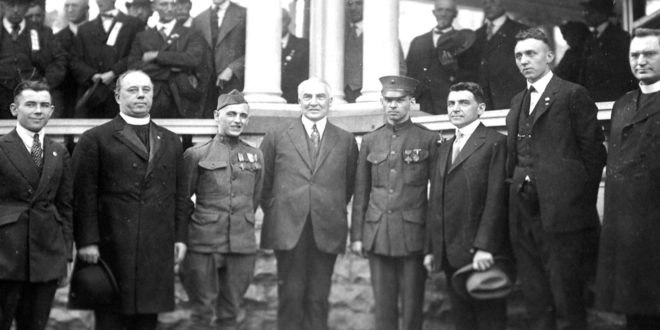Victor Nakas.
In a verdant village grew three sons
Three sons – solid oaks
Off they went to defend us against the enemy
Sacrificing bravely for our homeland
One died at Radviliškis, a second at Širvintos
A third on the amber seashore.
This is an excerpt from a mournful Lithuanian song — a lament over a mother’s dead sons — that I learned a half-century ago. I sang it dozens of times in Saturday school and at summer camps. It is a fitting song to recall as we commemorate Lithuania’s declaration of independence 103 years ago. It reminds us how tumultuous those times were, how improbable an independent Lithuanian nation state must have seemed to those who lived through them.
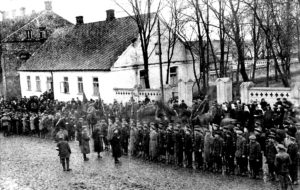
Consider these facts: After declaring independence, Lithuania had to fight off three foreign invaders. Before the end of 1918, Lithuania found itself at war with Soviet Russia. By mid-1919, Bolshevik forces controlled about 2/3 of Lithuanian territory. After mustering sufficient armed forces, Lithuania defeated the Bolsheviks. Overlapping this conflict, Lithuania had to repel the West Russian Volunteer Army, composed of Russians and Germans. They were funded by Germany with the goal of keeping Lithuania under German rule. Radviliškis, where one of the three sons in the song dies, was the site of a Lithuanian victory in October 1919 against the German-Russian force. Less than a year later, Lithuania was at war with Poland. In October 1920, the Poles seized Vilnius. They might have captured more territory but for military defeats they suffered a month later. One of those was at Širvintos, the place where the second son dies. Though Lithuania remained in a formal state of war with Poland until 1938, the actual fighting was concluded by the end of 1920. Lithuania had defended its young nation state at the cost of more than 1,400 fatalities.
It’s useful to look back on these wars of independence because they point to an important milestone. 2021 marks the 100th anniversary of Lithuania winning legal acceptance among members of the family of nation-states. Before 1921 only two countries had extended de jure recognition — Soviet Russia and Germany. But both wished to subvert the state they had recognized. In 1921, 10 more countries established legal ties with Lithuania. In September, Lithuania joined the League of Nations. Three years after declaring itself independent, Lithuania proved that it had fully earned the right to be regarded as such.
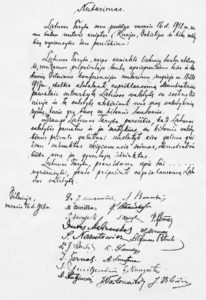
There is another reason why I call attention to the wars of independence. Though by February 1921, the period of armed conflict in Lithuania had concluded, it could never feel entirely secure. The enemies it had faced on the battlefield remained its opponents, unreconciled to the fact of Lithuania’s sovereignty. It was Lithuania’s great misfortune that by the 1930s Germany and the USSR came to be ruled by genocidal despots. As for Poland, the dispute over Vilnius allowed for no compromise. One side saw it as the historic capital of the Grand Duchy of Lithuania and an integral component of its national identity, the other as a Polish city through and through. The tensions on both sides of the dispute were so intense that, as one historian remarked, “Probably in Europe at that time, there were no greater enemies than Poland and Lithuania.” Lithuania was a David ever maneuvering among three Goliaths, each of them dozens of times larger than it.
Given these realities, it’s no wonder that almost exactly 20 years after the Polish army was defeated at Širvintos, Lithuania was forced to accept Soviet military bases on its territory. These events were like bookends. At one end was the beginning of true sovereignty; at the other was the beginning of its demise.
Recounting these historical facts is a grim exercise. With the hindsight of many decades, it’s fair to say that the Lithuanian nation state of February 16 was doomed to a transitory existence. The one we know today, the Lithuania of March 11, has already far exceeded its predecessor’s lifespan. It enjoys superior prospects for continued survival. But the really important thing to recognize is that though Lithuania was to fall victim to invaders in 1940 and 1941 who sought to obliterate all traces of its sovereign existence, it was not a failure. On the contrary, it was a success story.
The seeds of Lithuanian national consciousness had sprouted in the first half of the 19th Century. 1822 brought the first Lithuanian history written in Lithuanian. Then there were failed uprisings against tsarist rule. In 1883, in the pages of their monthly publication Aušra (The Dawn), Lithuanian intellectuals began to give voice to national aspirations of a Lithuanian-speaking populace.
At the turn of the century, Lithuania’s intelligentsia numbered around 5000, a tiny fraction of the populace. With the declaration of an independent nation state and the wars of independence to defend it, this educated minority set about creating the conditions to build a national culture. Their efforts bore abundant fruit. Independent statehood spawned Lithuanian art and architecture. Poetry and literature flourished. The state funded development of professional opera, ballet, and theater. Monuments were built, national traditions were born.
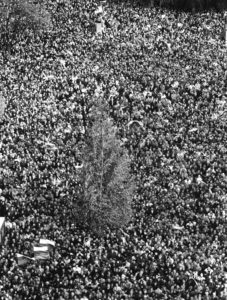
Nation-building was not confined to the elite. Illiteracy was basically eliminated. New hospitals were established; mortality rates began to approach those of developed European countries. Land reform created 160,000 new farmers. The Lithuanian government succeeded in shielding its citizens from some of the worst effects of the Great Depression. The Lithuanian currency, the gold-backed litas, remained strong during those turbulent years.
To be sure, the country had defects — an authoritarian government, limits on freedom of press and assembly, and a siege mentality stoked by its aggressive neighbors. And yet, the achievements by the leaders of the Lithuanian nation state inspired loyalty. Roots of patriotism grew among the populace. They grew so deep that wholesale murder, deportations, and 50 years of foreign occupation could not kill them.
Without the precedent of the nation state established on February 16, 1918, would the sovereign republic of Lithuania, declared on March 11, 1990, exist today? The answer is unknowable because so much depends on the accidents of history. Most of the USSR’s former republics that are independent countries today did not require a period of independence during the interwar period to provide the impetus for their present freedom.
What we do know for certain is that none of the former Soviet republics are prospering now to the same extent as the three Baltic states that have been able to draw on the historical memory of being free a century ago. Nor do any of those other republics enjoy the protective umbrella of NATO the way that Lithuania and its Baltic neighbors, new members of the League of Nations 100 years ago, do now.
Perhaps, as the Kremlin loosened its grip on its captive peoples, Lithuania would have declared independence in 1990 even without the experience of February 16. But there is ample evidence to suggest that those 20 years during which Lithuania flourished made the declaration of March 11 inevitable. After all, March 11 signified the arrival of a long-awaited moment, a resumption of a free and normal existence. It was the moment for which those who passed on songs like the one about the mother and her three patriotic sons had been preparing us throughout those long bleak years of foreign occupation.
Main source consulted for remarks: The History of Lithuania, by Alfonsas Eidintas, Alfredas Bumblauskas, Antanas Kulukauskas, Mindaugas Tamošaitis. Translated and edited by Skirma Kondratas and Ramūnas Kondratas, Revised Second Edition (Publishing House “Eugrimas,” 2015). Available at no cost at https://urm.lt/uploads/default/documents/Travel_Residence/history_of_lithuania_new.pdf
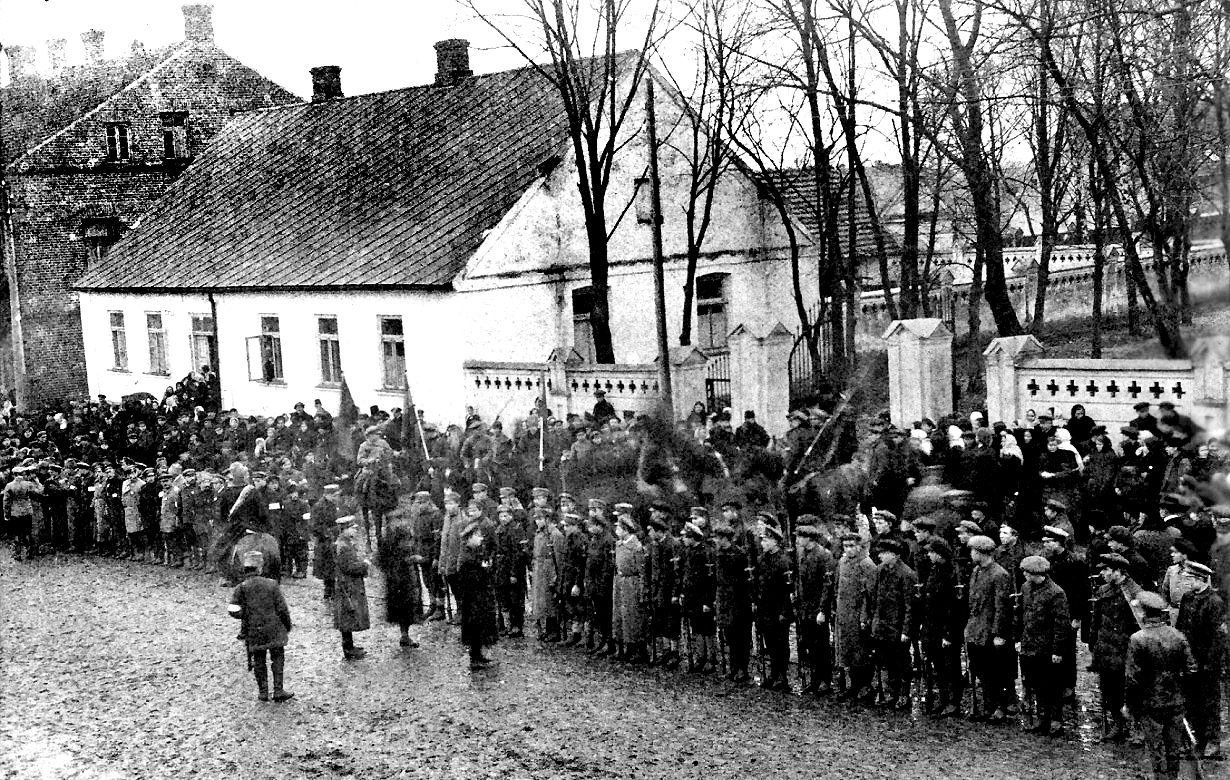
 DRAUGAS NEWS Lithuanian World Wide News in English
DRAUGAS NEWS Lithuanian World Wide News in English
